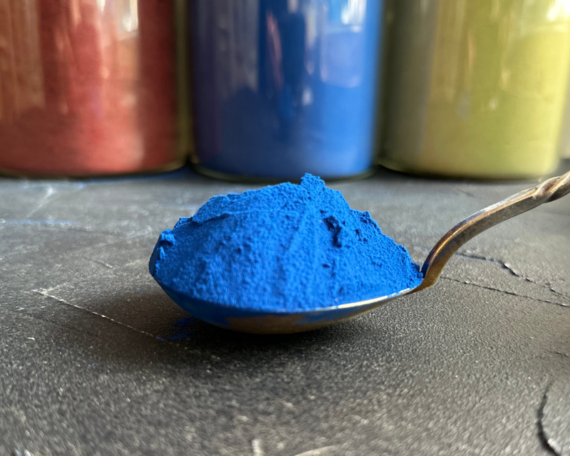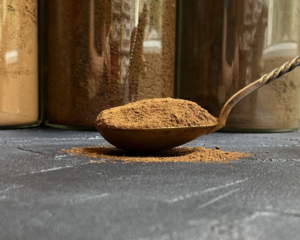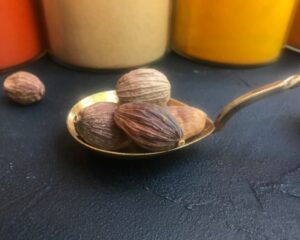Organic blue spirulina powder
From 13.80€


Organic blue spirulina powder
Blue spirulina and Green spirulina are often confused, coming from different types of algae and having different properties.
Key differences:
– Blue spirulina comes from a specific species of blue-green algae – Arthrospira platensis. Green spirulina is a common spirulina powder derived from Arthrospira platensis or Arthrospira maxima species, which are greenish in colour.
– Pigment and colour are the main differences between blue and green spirulina. Blue spirulina gets its intense blue colour from the pigment phycocyanin, a blue pigment with antioxidant properties. Green spirulina gets its green colour from a combination of chlorophyll (green pigment) and other pigments.
– Blue spirulina and green spirulina are rich in nutrients and vitamins, minerals and protein. Their nutrient content may be similar because they are derived from similar types of algae, but the exact nutrient composition varies depending on growing conditions and processing methods.
– Blue spirulina is primarily used as a natural food colouring, giving foods and beverages a bright blue or turquoise hue. On the other hand, green spirulina is commonly used as a food supplement due to its rich nutrient profile. It is often available in powder or capsule form and is commonly taken for its potential health benefits.
While green spirulina is more appreciated for its health benefits, blue spirulina also has similar properties.
Consumption
Blue spirulina has a rather mild taste, which is described as slightly earthy or grassy, with subtle hints of seaweed. Compared to green spirulina, the taste is much weaker, but can vary depending on the concentration and other ingredients with which it
Blue spirulina can be used in a variety of ways to impart a bright blue or turquoise colour to food and drink.
You can use it for desserts, smoothies, smoothies and baked goods.
There is no universally agreed standard dosage of the dye, so start with a small pinch, or about 1/4-1/2 teaspoon of blue spirulina powder, and adjust as needed.
Take into account taste compatibility.
Blue spirulina can change colour when used in cooking or mixed with certain ingredients. Its colour can change when exposed to different pH levels:
Acidic ingredients – adding acidic ingredients such as lemon juice or vinegar can turn blue spirulina more purple or pink.
Alkaline ingredients – when mixed with alkaline ingredients, it can become more green.
Heat – high temperatures during cooking can also affect the colour of blue spirulina. When exposed to heat, it can lose some of its vitality or change its shade.
Too much blue spirulina can cause a bitter taste, so it is best to use it in moderation.
Attention. Spirulina is not recommended for pregnant and lactating women, or for people with autoimmune diseases.
Sources:
https://www.webmd.com
emedicinehealth.com
NOTE. The information contained herein should not be construed as a recommendation for treatment or other health issues. We encourage you to make personal decisions about your personal health, taking into account a wide range of sources of information.
Organic blue spirulina (Arthrospira platensis) powder 100 %.
1475kJ/352kcal
Fat: <0.1 g
- of which saturates: <0,1 g
Carbohydrates 3,1 g
- of which sugar: 3,1 g
Fiber: 4,5 g
Protein 84 g
Salt 2,9 g
Store in a cool, dry place, out of direct sunlight, do not freeze.



